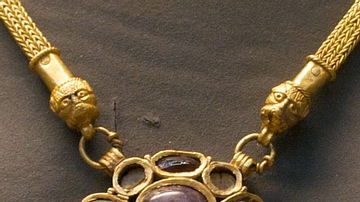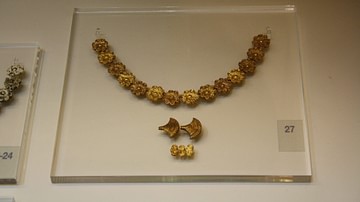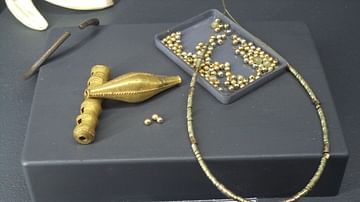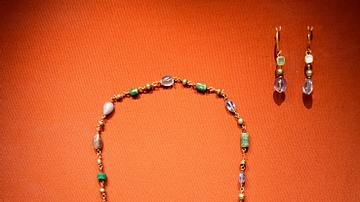Illustration
This body chains of linked medallions is the largest item of jewellery to survive from the Byzantine Empire. It would have been worn draped over the shoulders and around the hips. In Greek and Roman art, body chains were often associated with Venus, the goddess of love. Due to its size, this chain may have adorned a statue (possibly of Venus) instead of an actual woman. By the 500s CE, statues from the neighbouring Persian Empire showed kings wearing similar body chains. The significance of this type of accessory may have changed from symbolising female sexuality to denoting male power and authority. Donated by Mrs. Burns. Circa 600s. From Asyut, Egypt. (The British Museum, London).
About the Author
Cite This Work
APA Style
Amin, O. S. M. (2016, October 07). Byzantine Gold Body Chain. World History Encyclopedia. Retrieved from https://www.worldhistory.org/image/5773/byzantine-gold-body-chain/
Chicago Style
Amin, Osama Shukir Muhammed. "Byzantine Gold Body Chain." World History Encyclopedia. Last modified October 07, 2016. https://www.worldhistory.org/image/5773/byzantine-gold-body-chain/.
MLA Style
Amin, Osama Shukir Muhammed. "Byzantine Gold Body Chain." World History Encyclopedia. World History Encyclopedia, 07 Oct 2016, https://www.worldhistory.org/image/5773/byzantine-gold-body-chain/. Web. 18 Apr 2025.








